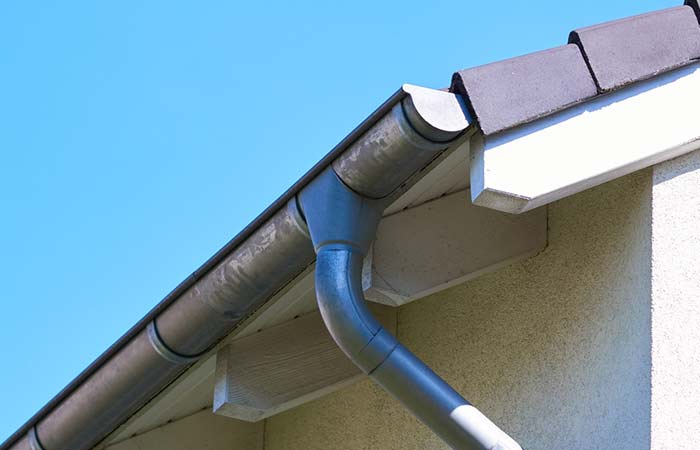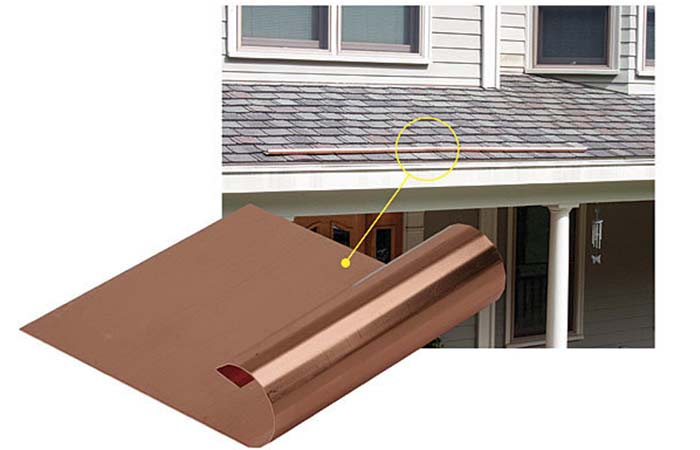When it comes to controlling water on the roof, most people think of gutters since they are the most common features of roofs for this task. Another piece of structure to take note of is the rain diverter. As the name suggests, the rain diverter is meant to divert rain water away from a certain part of the roof such as the doorway or patio.
When it comes to the similarities, both rain diverters and gutters are meant to control rain water on the roof. As the rain diverter directs water away from a certain part of the roof, gutters direct the water into a downspout and away from a large part of the roof.
As for the differences, gutters cover the whole roof or a large part of it while rain diverters only cover a certain small section of the roof. Often, rain diverters are installed in sections where gutters would appear unsightly or would be cumbersome to install. Rain diverters often direct the rain water into gutters to be carried away from the roof.
Differences Between Rain Diverter & Roof Gutter
The aspects drawing them apart from each other include the following:
- Gutters cover the whole roof while rain diverters cover small sections of the roof.
- Gutters are always installed at the end of the roof on the lower side while rain diverters can be installed at any height and even right next to the end of the roof.
- Gutters have downspouts while rain diverters don’t.
The two types of roofing structures are often installed together so that the rain diverters empty the water they divert into the gutter to be poured off it.
Roof Gutters
Gutters are installed on the roof to keep rain water from affecting the wall and the ground around the house. They keep water from seeping into the ground and affecting the basement and other parts of the house like the wall and fascia board.

Pros
The best bits about having roof gutters include the following:
- Gutters protect rain water from damaging the paint on your wall. Since water doesn’t run off the roof, the paint will be preserved.
- Gutters also keep water away from the foundation of the house such that it doesn’t seep into the foundation and weaken it.
- They also keep water away from the basement. Since water doesn’t fall next to the ground, it will not seep into the basement and weaken it.
- Prevents the growth of mold and mildew on the walls. Keeping the rain water away from walls keeps mold and mildew away since they require wetness on the wall to grow and thrive.
- Gutters can also be used to collect rain water for use in watering lawns or household usage. If there is enough rainfall, you can collect lots of water from a relatively small roof.
These aspects have made gutters a favorite for houses in different weather conditions around the world.
Cons
The downside to having gutters on your roof are:
- Gutters can be an unnecessary cost in areas with low amounts of rainfall. Their installation and maintenance can be quite costly yet there is so little rainfall that they don’t serve their purpose well.
- Gutters often attract pests such as rodents and birds to nest in them which can be a major headache since they require going to the roof to remove them.
- Gutters, especially those meant for a large building, can be quite hectic to install. Some gutter materials such as steel require professionals to cut into pieces and to solder them together.
- Gutters can also change the look of your home drastically which may not always be a good sign.
Gutters, although with the negatives above, still provide great value for money unless they’re not fit for certain locations.
Rain Diverters
Rain diverters, unlike gutters and downspouts, divert water away from the sections of the roof which don’t do well with water. These include doors, patios and even some windows. They’re often installed on the roof of the house directing water either to the other parts of the roof or into a gutter.

Pros
The best bits about having rain diverters on your roof include the following aspects:
- They protect the chosen section from damage by water from the rain.
- Rain diverters also help protect ground next to the house from water damage making them play a similar role to that of gutters.
- Rain diverters also keep mold and mildew from growing on certain parts of the wall by denying them moisture.
As seen here, rain diverters are mostly special-purpose structures with most roofs not needing them to begin with.
Cons
The downsides to having rain diverters include the following:
- They don’t cover the whole roof hence not as reliable as gutters are at protecting the roof and building as a whole.
- Rain diverters can be an eyesore especially given their L or J shapes and the fact that they’re inserted on the plain sections of the roof.
- Unlike gutters which are quite commonplace and easy to install, rain diverters can be quite technical to install and can often lead to damage to the roof if not done right. They should be installed under the shingles or other roofing materials which can open them up for leaks.
You may need a specialist to install rain diverters. Most installations end up having issues if not done by a professional given how delicate it is to install the diverters below the shingles, tiles or other roofing materials. Even with this, you might need to choose exactly where to place the rain diverter as most people don’t find them appealing
Rain Diverter vs Gutter: Similarities
While they’re structurally different, rain diverters and gutters are both used to control water on the roof.
Similarities
The similar aspects between the two structures include the following:
- They are both used in controlling water on the roof. Although they do so at different levels, the task is the same for both.
- They’re usually made of the same types of materials. You can find both gutters and rain diverters made of metal and plastics doing the same tasks.
More on Gutters
- Why are Gutters Important & When are Gutters not Necessary?
- How Long do Gutters Last?
- Do Gutters Cause Ice Dams?
- How to Fix a Sagging Gutter
- How to Install Gutters Without Fascia Board
- Vinyl vs Aluminum vs Steel Gutters: Differences, Pros & Cons
- Rain Gutter Alternatives, Low Maintenance, Cheap & DIY Options
As an Amazon Associate, we earn from qualifying purchases. Details here
